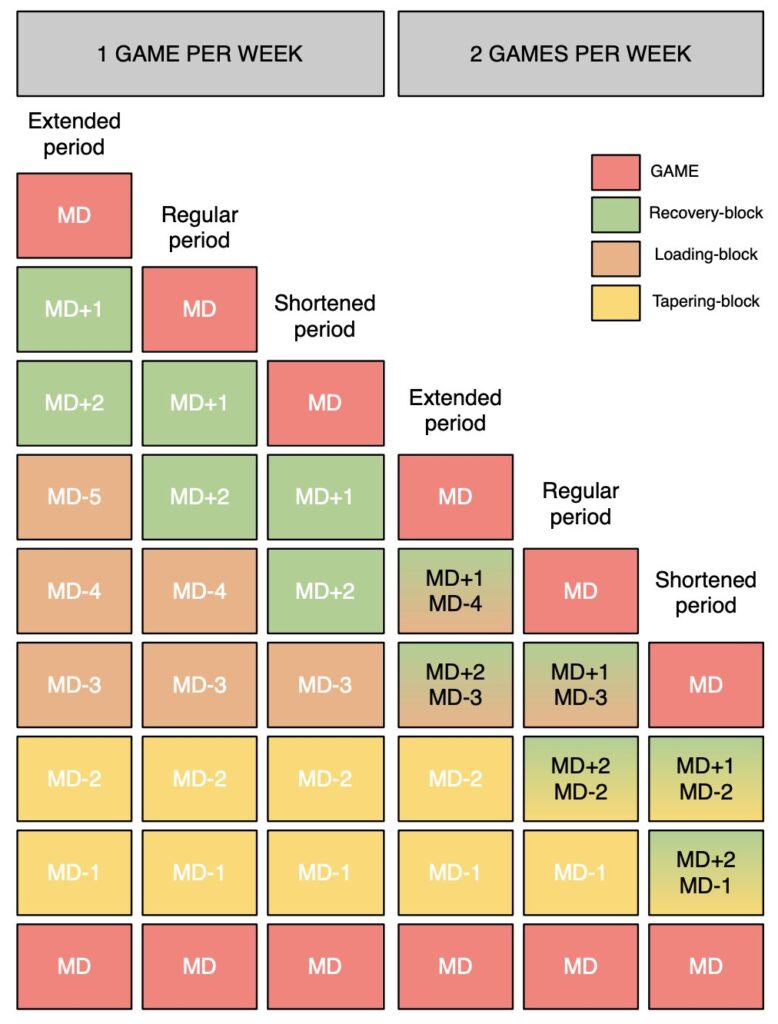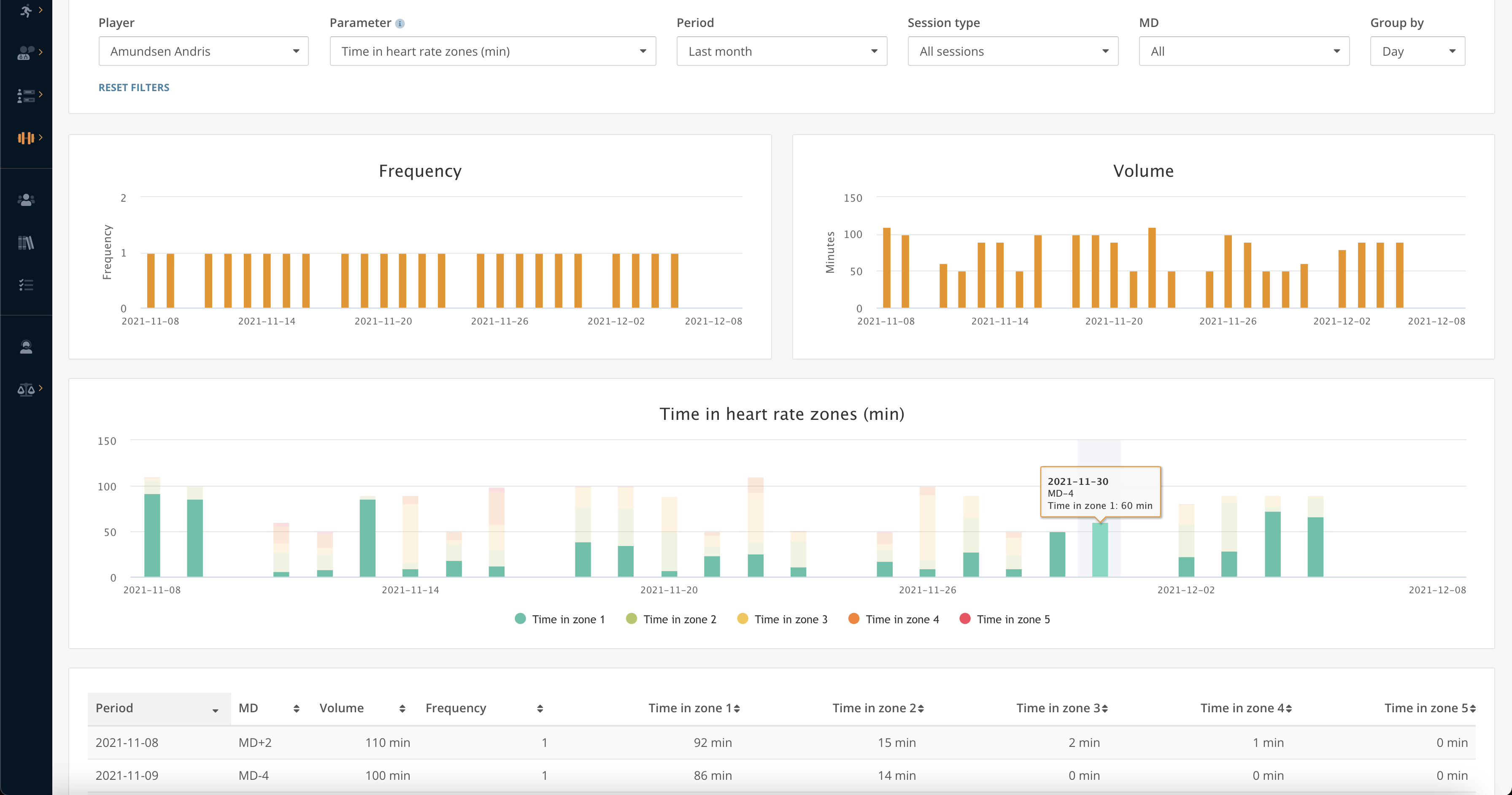The pre-official match day
Physical demands and training content
Training periodisation refers to the systematic and strategic planning of training load in relation to the training objectives. In football, periodisation is based on a hierarchical structure of macro-, meso- and microcycles. Pre-season, the first part of in-season, the winter break, and the second part of in-season are periods defined within the macro-periodisation.
The objective of physical training during pre-season is to build football-specific fitness. In most competitions, clubs initially use the winter break period to allow their players to recover from the first part of in-season followed, by a training camp to rebuild physical fitness for the remainder of the season.
During in-season, physical training is generally structured in different mesocycles, consisting of an alternation of training weeks with a training focus directed towards either more volume, intensity, or recovery. However, reports from elite football show no structural periodisation within these mesocycles. Differences in volume and/or intensity between training weeks mainly depend on the match schedule, with higher training loads observed in weeks with two or three matches compared to weeks with one match. Therefore, it can be concluded that the rapid succession of matches within the season does not allow for careful planning of mesocycles.
Multiple studies have described the weekly periodisation in football, known as the micro-periodisation (Anderson et al, 2015; Malone et al, 2015; Stevens et al, 2017; Kelly et al, 2019). These studies categorise training days in terms of the proximity to the previous or next match day (MD-X structure). MD+1 and MD+2 are often seen as recovery days. These days are followed by a loading block (MD-5 to MD-3) and a tapering block (MD-2 and MD-1). In all studies, a clear pattern was observed consisting of a gradual reduction in training load from mid-week to MD-1. This indicates that clubs plan a short-term taper period within the training week to optimise players’ physical readiness for the next match.

Found on Twitter. Reference unknown. Please contact us if you have more information on the source of this figure.
The gradual reduction in training load during the training week is also reported in a new study published in International Journal of Sports Physiology and Performance. The study is from a group of Spanish researchers associated with the football club Real Sociedad and the University of the Basque Country.
Twenty-two reserve players of the football club were involved in the study. The training load (i.e., GNSS and RPE) was monitored for every training session and the sessions were categorised based on the tactical periodisation approach. This approach consists of an acquisition (or loading) block that contain three days with a specific training focus (i.e., strength (MD-4), endurance or volume (MD-3) and speed (MD-2), and a taper day (i.e., MD-1, pre-official match day).
The results of this study showed a clear reduction in GNSS (all variables) and RPE load during the pre-official match day. The reduced load resulted from both a lower training duration and intensity. The authors also described some information about the training content of the sessions. Compared with the strength and speed day, a higher percentage of time was allocated during the pre-match training session to tasks with the ball but these tasks were performed less often in presence of opponents. The pre-match training session was also characterised using big spaces (i.e., small numbers of players within a given space).
These findings suggest that coaches use passing drills that mimic real match scenarios during the pre-match training sessions. These drills are probably designed to train the tactical strategy while also avoiding high loads from explosive actions or physical complaints resulting from body contacts. Obviously, these insights are specific to the club or coaches that were involved in the study. Other strategies, such as the use of small-spaced small-sided games are also often used as a tool to create a mental focus towards the upcoming match.

It is clear that the MD-X format is often used as the basic structure for weekly periodisation. To help coaches easily apply this format, we recently added a coding system to our athlete management system. If you are interested to see how it may benefit your team, you can request a free demo here.
Interested in training periodisation?
Want to see how our platform can help you periodise your trainings with MD-X structure?
Care to keep updated?
Subscribe to our newsletter.
You'll get updates about our recent blog posts and platform updates.